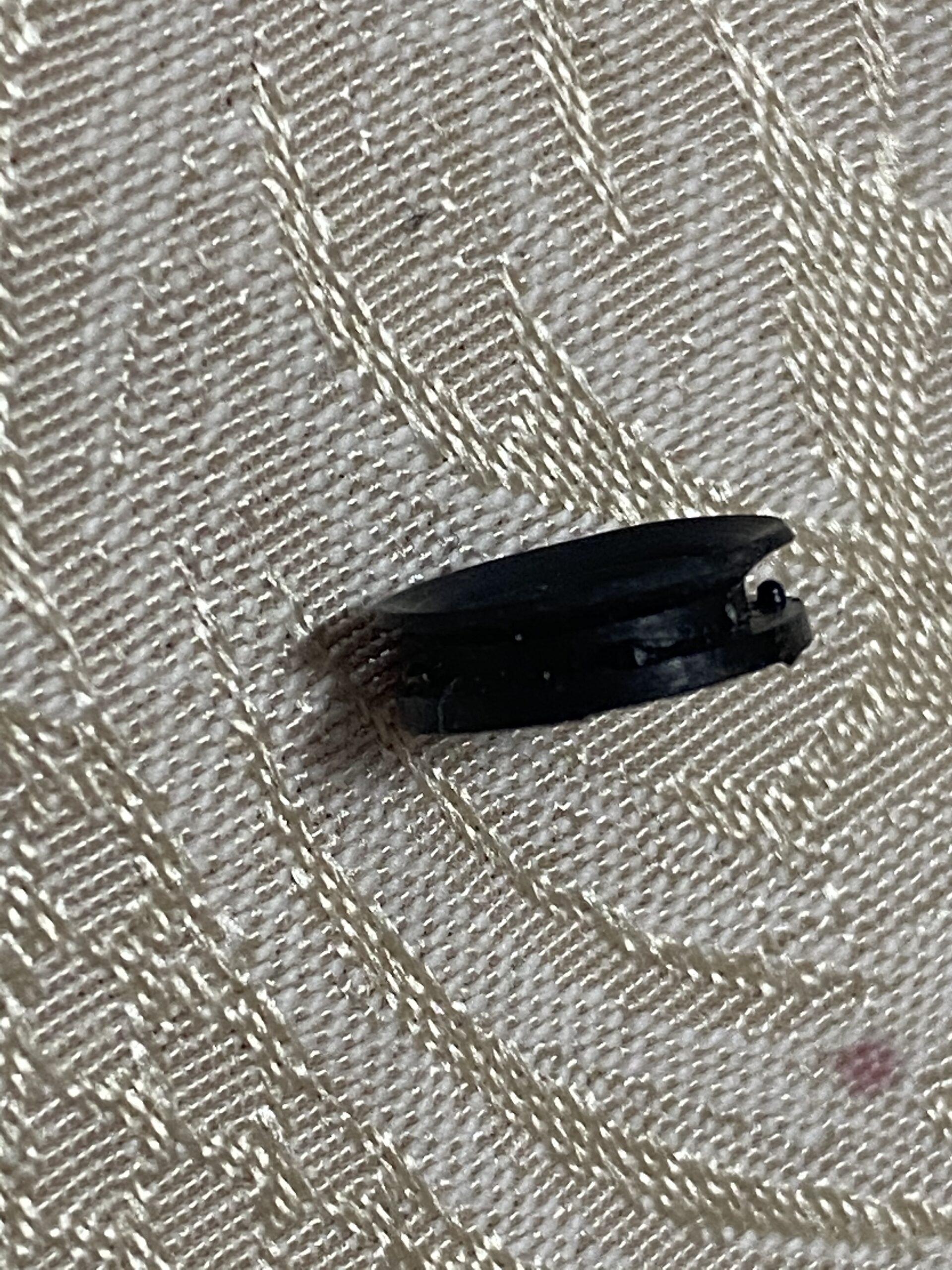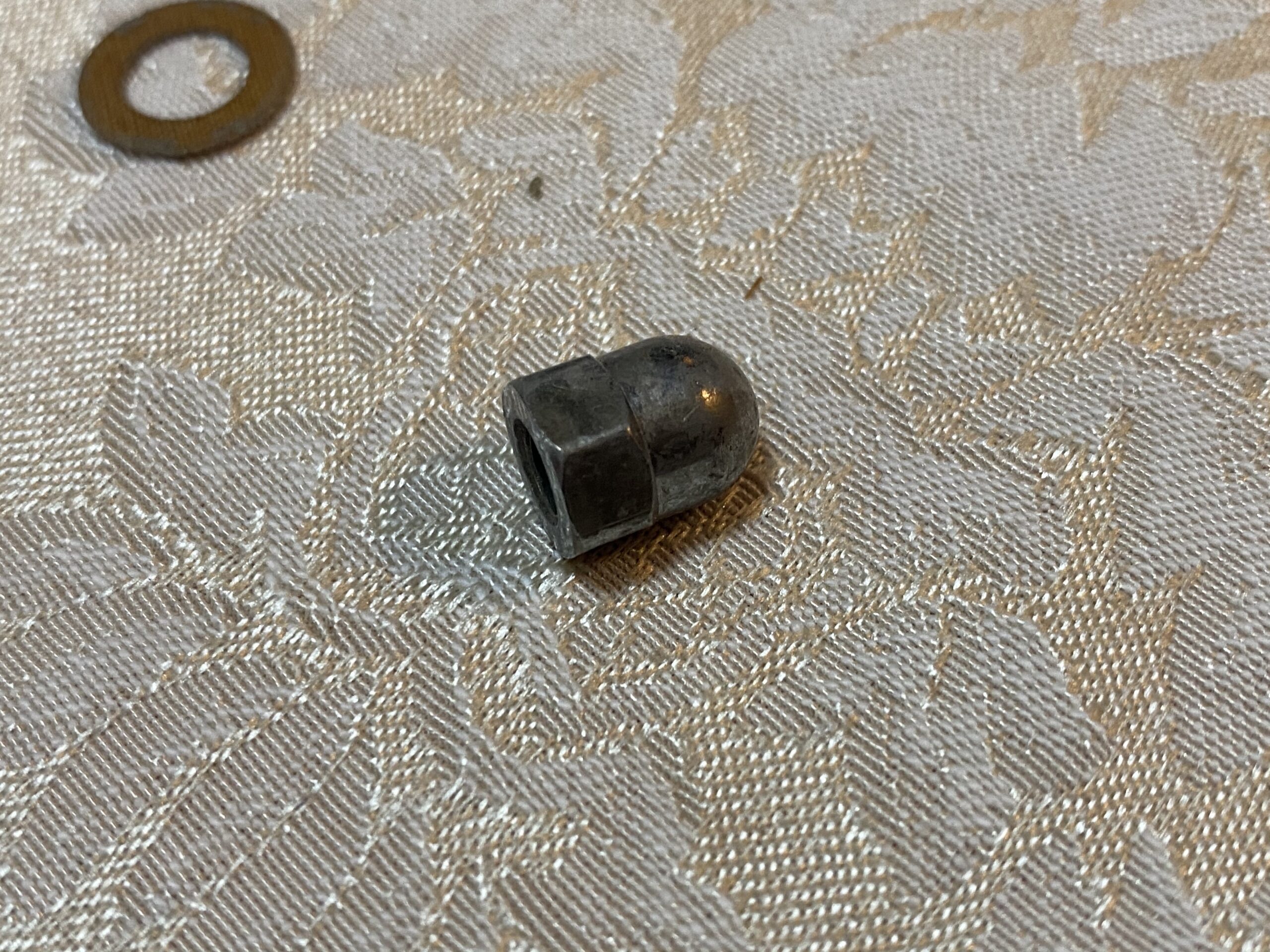XRF test results for Interior components of vintage blender. One component positive for 12,700 ppm Lead.
Introduction:
Tamara Rubin is a Federal award winning independent advocate for consumer goods safety and childhood Lead poisoning prevention. She is also a mother of Lead-poisoned children. She began testing consumer goods for toxicants in 2009, and was the parent-advocate responsible for finding Lead in the popular fidget spinner toys in 2017. She uses XRF testing (a scientific method used by the Consumer Product Safety Commission) to test consumer goods for metallic toxicants (including Lead, Cadmium, Mercury and Arsenic). To read more about the testing methodology employed for the test results reported on this blog, please click this link.
Full XRF test results for the vintage blender components pictured above
Component #1 – X-shaped blade
60-second test – Stainless Steel #416
- Bromine (Br): 18 +/- 7 ppm
- Chromium (Cr): 118,200 +/- 400 ppm
- Vanadium (V): 857 +/- 107 ppm
- Manganese (Mn): 6,341 +/- 336 ppm
- Iron (Fe): 866,000 +/- 900 ppm
- Nickel (Ni): 4,366 +/- 190 ppm
- Copper (Cu): 1,915 +/- 109 ppm
- Zinc (Zn): 1,007 +/- 64 ppm
- Titanium (Ti): 224 +/- 130 ppm
- Molybdenum (Mo): 838 +/- 45 ppm
- Tin (Sn): 117 +/- 14 ppm
- Antimony (Sb): 37 +/- 18 ppm
- Bismuth (Bi): 33 +/- 16 ppm
Continue reading below each of the images

Component #2 – small black plastic/rubber ring
60-second reading
- Bromine (Br): 5 +/- 1 ppm
- Iron (Fe): 407 +/- 17 ppm
- Copper (Cu): 1,062 +/- 16 ppm
- Zinc (Zn): 2,438 +/- 23 ppm
- Titanium (Ti): 308 +/- 107 ppm
- Barium (Ba): 113 +/- 54 ppm
- No other metals detected
Continue reading below each of the images

Component #3 – small brown hard plastic ring /washer
60-second reading
- Bromine (Br): 2 +/- 1 ppm
- Iron (Fe): 48 +/- 10 ppm
- Copper (Cu): 97 +/- 6 ppm
- Zinc (Zn): 112 +/- 5 ppm
- Barium (Ba): 176 +/- 53 ppm
Component #4 – small metal washer
60-second reading
- Lead (Pb): non-detect
- Cadmium (Cd): 30 +/- 7 ppm
- Bromine (Br): non-detect
- Chromium (Cr): 151,100 +/- 800 ppm
- Vanadium (V): 762 +/- 117 ppm
- Manganese (Mn): 9,778 +/- 342 ppm
- Iron (Fe): 461,400 +/- 8,100 ppm
- Nickel (Ni): 41,200 +/- 1,100 ppm
- Copper (Cu): 2,962 +/- 122 ppm
- Zinc (Zn): 1,511 +/- 72 ppm
- Zirconium (Zr): 204 +/- 12 ppm
- Nb: 1,391 +/- 43 ppm
- Molybdenum (Mo): 2,573 +/- 87 ppm
- Indium (In): 30 +/- 9 ppm
- Tin (Sn): 89 +/- 11 ppm
- Platinum (Pt): 224 +/- 53 ppm
- Gold (Au): 147 +/- 40 ppm
- Reading #2:
- Lead (Pb): 29 +/- 8 ppm
- Cadmium (Cd): 36 +/- 5 ppm
Continue reading below each of the images
Component #5 – small domed metal end cap nut
60-second reading
- Lead (Pb): 12,700 +/- 200 ppm
- Cadmium (Cd): non-detect
- Mercury (Hg): non-detect
- Bromine (Br): non-detect
- Chromium (Cr): 199 +/- 49 ppm
- Vanadium (V): 241 +/- 80 ppm
- Manganese (Mn): 150 +/- 39 ppm
- Iron (Fe): 1,716 +/- 54 ppm
- Cobalt (Co): 515 +/- 37 ppm
- Nickel (Ni): 317,700 +/- 500 ppm
- Copper (Cu): 465,100 +/- 600 ppm
- Zinc (Zn): 199,200 +/- 500 ppm
- Titanium (Ti): 287 +/- 122 ppm
- Nb: 246 +/- 25 ppm
- Tin (Sn): 1,887 +/- 35 ppm
- Barium (Ba): 107 +/- 47 ppm
- No other metals detected
Component #6 – Gray metal wheel element of spindle piece
60-second reading
- Lead (Pb): 120 +/- 27 ppm
- Cadmium (Cd): non-detect
- Mercury (Hg): non-detect
- Bromine (Br): non-detect
- Chromium (Cr): non-detect
- Iron (Fe): 210 +/- 39 ppm
- Copper (Cu): 266 +/- 45 ppm
- Zinc (Zn): 999,400 +/- 2,200 ppm
Component #7 – Metal shaft of spindle piece
60-second reading – Stainless Steel #416
-
- Bromine (Br): 16 +/- 9 ppm
- Chromium (Cr): 122,500 +/- 600 ppm
- Vanadium (V): 548 +/- 136 ppm
- Manganese (Mn):10,300 +/- 500 ppm
- Iron (Fe): 861,300 +/- 1,000 ppm
- Nickel (Ni): 1,818 +/- 206 ppm
- Copper (Cu): 1,091 +/- 120 ppm
- Zinc (Zn): 678 +/- 73 ppm
- Molybdenum (Mo): 1,571 +/- 67 ppm
- Tin (Sn): 42 +/- 17 ppm
Continue reading below each of the images
Component #8 – Metal threading on end of spindle piece
60-second reading
- Lead (Pb): 2,225 +/- 89 ppm
- Cadmium (Cd): non-detect
- Mercury (Hg): non-detect
- Bromine (Br): non-detect
- Chromium (Cr): 124,100 +/- 500 ppm
- Vanadium (V): 605 +/- 128 ppm
- Manganese (Mn): 9,860 +/- 415 ppm
- Iron (Fe): 805,000 +/- 1,000 ppm
- Cobalt (Co): 1,342 +/- 516 ppm
- Nickel (Ni): 12,500 +/- 300 ppm
- Copper (Cu): 24,400 +/- 400 ppm
- Zinc (Zn): 17,300 +/- 300 ppm
- Titanium (Ti): 515 +/- 175 ppm
- Molybdenum (Mo): 1,857 +/- 62 ppm
- Tin (Sn): 61 +/- 16 ppm
- Barium (Ba): 183 +/- 60 ppm
Thank you for reading and for sharing my posts. As always, please let me know if you have any questions and I will do my best to answer them personally as soon as I have a moment.
Tamara Rubin
#LeadSafeMama
Never Miss an Important Article Again!
Join our Email List











Do you have a picture or brand name on the blender? I have a Dormeyer blender I got at Goodwill in the 70’s. I am not using it anymore and I always assumed from the name that it was German so probably not the same as yours.
Thanks, Mimi
Those look exactly like the parts for my Waring bar blender – i’ve rebuilt it a few times.
Is it Waring?
Yeah – I don’t think this is vintage afterall – I think it might be a new reproduction one – so yes – concerning!
I need to update the post.
T